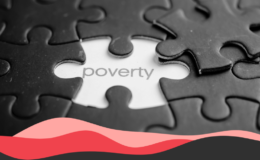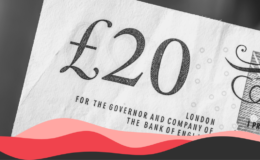- UK VAT is 20% for petrol, diesel and commercial energy use, and 5% for domestic energy
- Current EU rules apply to NI but not the rest of the UK, and state that fuel and energy VAT must be at least 5%
- VAT is only one tax on energy – fuel duty, for example, could be lowered to reduce costs across the UK
On BBC Radio Ulster’s The Nolan Show on Wednesday, Aug 3, Jim Allister said:
“One of the biggest difficulties for the cost of living is the price of fuel. One of the biggest contributors to that is the 20% VAT on fuel and the 5% VAT on electricity. But, because of the Protocol, Northern Ireland cannot do anything about that… Here’s my proposal: remove VAT, for the currency [duration?] of the cost-of-living crisis, from fuel and you immediately reduce costs by 20%. But we can’t do that in Northern Ireland, if it was done elsewhere [in the UK]. Because we are not under the UK VAT regime, we are under the EU VAT regime which has Brussels dictate what our VAT rates can be and which, in Brussels law, cannot be reduced at any point below 5%.”
UK fuel VAT is currently 20% for petrol, diesel and commercial energy use (with some exceptions). The rate is 5% for domestic energy use, such as electricity or gas.
The NI Protocol requires alignment in NI with EU VAT rules on “concerning goods”. Energy products are classified as goods for VAT purposes.
Whilst national governments within the EU choose their own VAT rates, they must be set within the EU’s framework. Under this system, the minimum rate of VAT which can be applied to energy is 5%.
As the UK already operates a VAT rate of 5% for domestic energy, it would be in breach of the minimum limits to reduce the rate further and apply it in NI.
However, VAT is not the only type of tax that applies to energy. There are other ways Westminster could reduce costs.
The UK sets its own fuel duty, for example, and reductions in that tax would apply across the whole of Great Britain and Northern Ireland, without any restrictions stemming from the NI Protocol.
EU rules – background
The EU’s Value Added Tax Directive restricts individual member states from reducing VAT for goods and services below certain minimum limits.
In general, it requires all EU countries to apply a standard VAT rate of 15% to sales of all goods and services. However, there are exceptions to this, including: a “positive list” of goods and services to which any Member State can apply a reduced rate between 5-15%; and a series of country specific derogations that reflected a country’s prior VAT arrangements.
The UK’s approach to domestic fuel and power VAT when it was still an EU member illustrates how these rules work. From 1993 to 1997, the UK’s VAT rate on domestic fuel and power was 8%. In July 1997, when the then Labour Government wished to cut VAT on domestic fuel and power, EU rules meant they were only able to reduce it to 5%. The UK VAT rate on domestic fuel and power has remained at this rate since 1997.
Impact on NI
Article 8 of the Northern Ireland Protocol deals with VAT and excise. While the UK remains responsible for the application and implementation of VAT and excise in NI – and collects the duties – the EU’s VAT rules for goods continue to apply in NI.
This includes the EU’s rules on setting VAT rates, although Article 8 allows NI to apply exemptions and reduced rates that are applicable in Ireland.
One example of this is the UK’s reduction of VAT on sanitary products to zero. The reduction applied in both Great Britain and NI and did not breach any EU rules because Ireland already had a zero VAT rating on sanitary products in place.
The protocol requires the UK to continue applying EU rules on VAT “concerning goods” in NI (but no longer in Great Britain). As such, EU rules on minimum rates — including the exemptions from EU VAT rules which the UK negotiated while it was a Member State — continue to apply in Northern Ireland.
Flexibilities – and other options
Last December, EU Ministers agreed to make changes to the VAT Directive. This gives member states the ability to drop rates lower than previously allowed, but only for a limited set of goods and services.
Most EU countries have taken steps to reduce VAT on energy alongside other products such as basic foodstuffs but many of these countries were previously charging higher rates than the UK. While the Netherlands, Belgium, Portugal, Spain and others have significantly reduced VAT on domestic energy, their reduced rates do not breach the 5% minimum.
Although the UK’s 5% rate on domestic energy remains lower than most EU countries, VAT is charged on motor fuels at 20%. Several EU countries have lowered VAT on petrol and diesel. Poland, for example, has reduced VAT on petrol and diesel from 23% to 8%, showing that being within EU rules is not a barrier to reducing VAT, provided the rate remains above the 5% minimum.
Moreover, reducing VAT is not the only way to cut domestic fuel costs.
For instance, the pump price for fuels used in vehicles includes VAT charged at 20%. VAT is applied after fuel duty so if fuel duty was reduced the value of VAT on motor fuels would also go down.
Governments in several EU countries have reduced fuel taxes on petrol and diesel to a much greater extent than in the UK. The UK has reduced fuel duty by 5p per litre, whereas fuel tax cuts in Germany (25.1ppl per litre), Italy (21.2p per litre) and Ireland (14.5p per litre) have been much larger. Therefore, a number of EU nations have reduced the tax burden on petrol and diesel to a larger extent than the UK, without changing the VAT rate.




